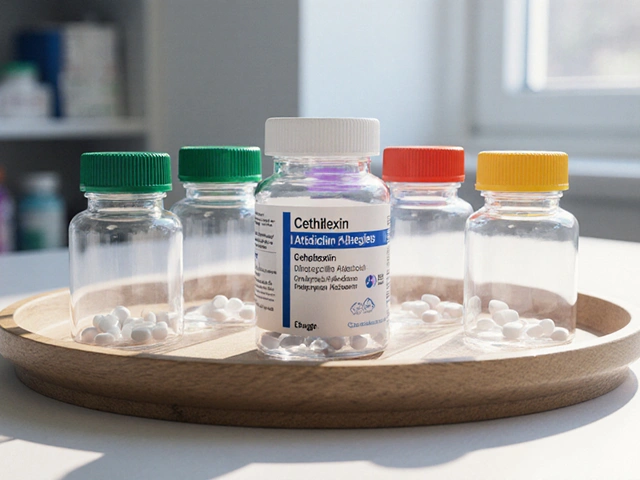Ethambutol — what it does and what you must watch for
Ethambutol is a core drug used with other medicines to treat tuberculosis. It helps stop the bacteria that cause TB from building their cell walls. That makes the bugs weaker and lets the other TB drugs clear the infection. It’s effective and usually well tolerated, but the medicine can affect your eyesight — that’s why you need to know the basics before and during treatment.
How Ethambutol works & when it’s used
Ethambutol blocks enzymes (arabinoxyl transferases) the bacteria use to build their outer layer. Doctors usually give it with isoniazid, rifampicin, and pyrazinamide in the first months of TB treatment. It’s also used when TB bacteria are resistant to other drugs or to treat certain non-tuberculous mycobacterial infections. Typical adult dosing is about 15 mg/kg once daily (often rounded), or higher intermittent doses in special regimens — your prescriber will pick the exact schedule based on weight, kidney function, and national guidelines.
Safety tips & monitoring
The most important side effect is optic neuritis — inflammation of the optic nerve that causes blurred vision, trouble telling colors apart (especially red vs green), and reduced visual fields. It’s more likely at higher doses or with long treatment, but it can happen at usual doses too. Report any changes in sight immediately. If caught early and the drug is stopped, vision often improves but recovery can take weeks or months.
Practical checks: get a baseline eye exam (visual acuity and color testing) before starting ethambutol, then repeat checks monthly or if symptoms show up. If you have kidney problems, your doctor will lower the dose or space doses out — ethambutol is cleared by the kidneys. Avoid missing scheduled tests, and don’t drive or operate heavy machinery if your vision blurs.
Other common side effects include nausea, rash, headache, and peripheral neuropathy (tingling in hands or feet). These are usually mild but worth telling your provider about. Ethambutol can interact with antacids containing aluminum, which might reduce how much of the drug your body absorbs; ask whether to separate dosing from antacids.
If you miss a dose, take it as soon as you remember unless it’s almost time for the next dose — then skip the missed one. Don’t double up. Store ethambutol at room temperature, away from moisture and light, and keep it out of reach of children.
Pregnancy and breastfeeding: data are limited. Doctors may still use ethambutol when treating active TB in pregnancy if the benefits outweigh risks. Always follow your clinician’s advice.
Short version: ethambutol is effective for TB but needs eye monitoring. Know the signs of vision problems, follow dose adjustments for kidney issues, and keep regular checkups to stay safe while you treat the infection.

Ethambutol's Role and NGO Impact in Tuberculosis Control
This article explores the vital role of Ethambutol in tuberculosis treatment and the significant contributions of non-governmental organizations in TB control. By understanding the medication's importance and how NGOs create awareness and access to care, we can appreciate the combined efforts needed to combat this global health issue.
Categories
- Medications (50)
- Health and Medicine (47)
- Health and Wellness (34)
- Online Pharmacy Guides (15)
- Nutrition and Supplements (7)
- Parenting and Family (3)
- Environment and Conservation (2)
- healthcare (2)
- prescription savings (1)



